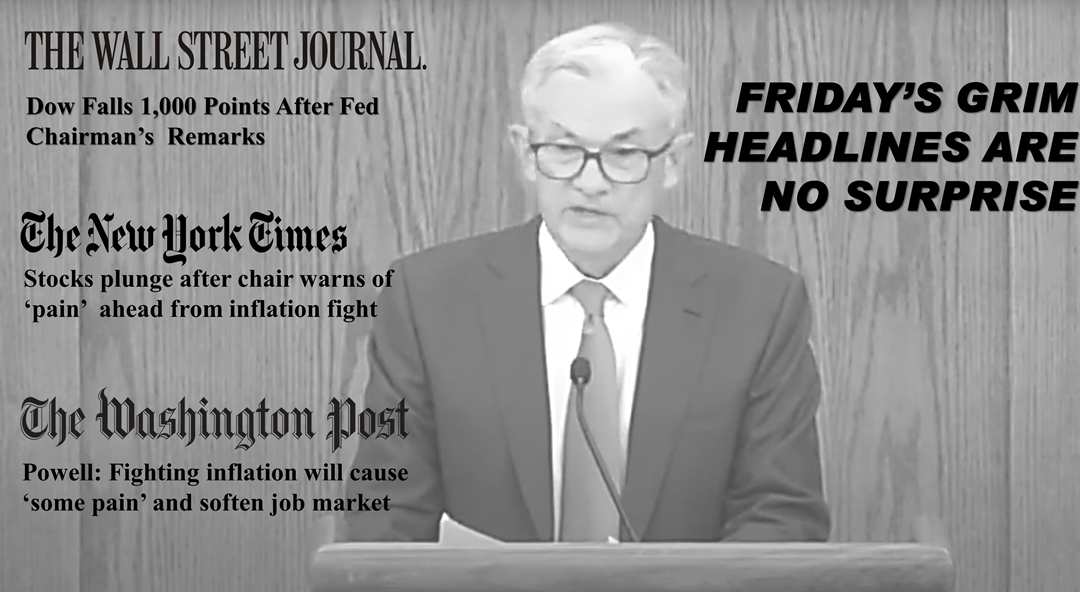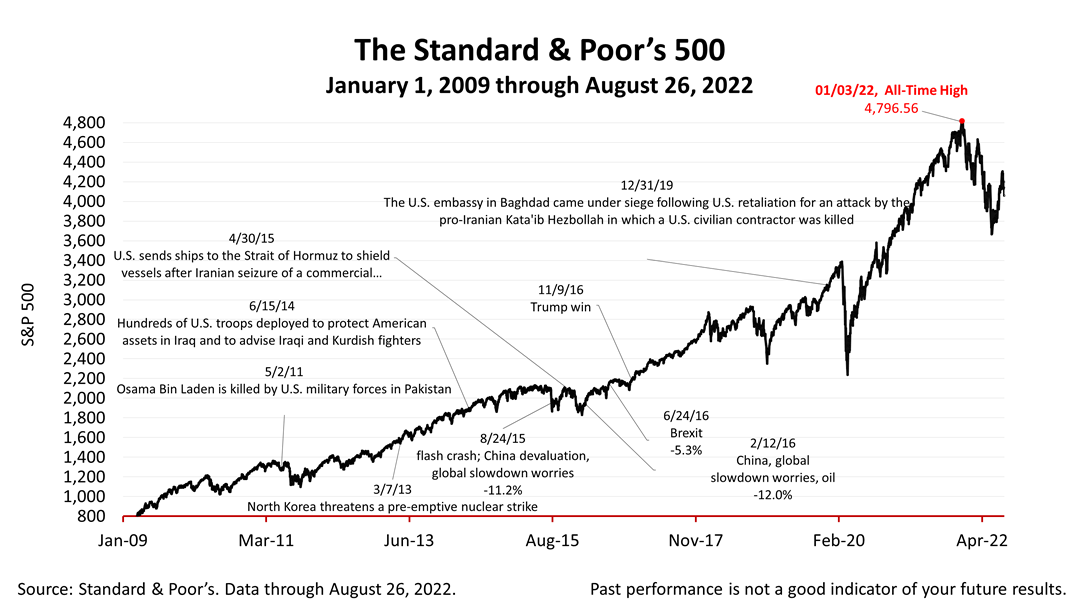
At an economic policy symposium sponsored by the Federal Reserve Bank of Kansas City in Jackson Hole, Wyoming, Federal Reserve Chairman Jerome Powell said on Friday that the Federal Reserve would slow the economy to fight inflation and that it would cause “some pain” in the economy.
The top of The Wall Street Journal’s website Friday evening heralded news of a 1,000-point plunge in the Dow Jones Industrial Average of 60 stocks. The Fed chair’s remarks were bumped from the top story slot of The New York Times and The Washington Post but were page-one news.
The Fed chairman’s remarks and stock market plunge should not be a surprise if you’ve been reading our weekly updates. The Fed has little choice but to tighten monetary policy even if it causes a recession if the burst of inflation experienced post-Covid 19 is to be snuffed out.
The Fed knows from history – specifically, from the Great Inflation of 1965 to 1982, that it has little choice but to risk causing a recession. During the 17-year stretch of inflation that peaked 40 years ago, policymakers learned that inflation could not be trifled with, and it would be ended only after the then-Fed-chair, Paul Volcker, imposed tight monetary policy, knowing it would cause a recession, which lasted 17-months, from July 1981–November 1982.
The Fed chair’s remarks and stock market reaction are no surprise to those who know details of financial economic events 40 years ago.
The Standard & Poor’s 500 stock index closed this Friday at 4,057.66. The index lost -3.4% from Thursday and -4.12% from last week. The index is up +57.83% from the March 23, 2020, bear market low and down -16.7% from its January 3rd all-time high.
The Standard & Poor's 500 (S&P 500) is an unmanaged group of securities considered to be representative of the stock market in general. It is a market-value weighted index with each stock's weight proportionate to its market value. Index returns do not include fees or expenses. Investing involves risk, including the loss of principal, and past performance is no guarantee of future results. The investment return and principal value of an investment will fluctuate so that an investor's shares, when redeemed, may be worth more or less than their original cost. Current performance may be lower or higher than the performance quoted.


